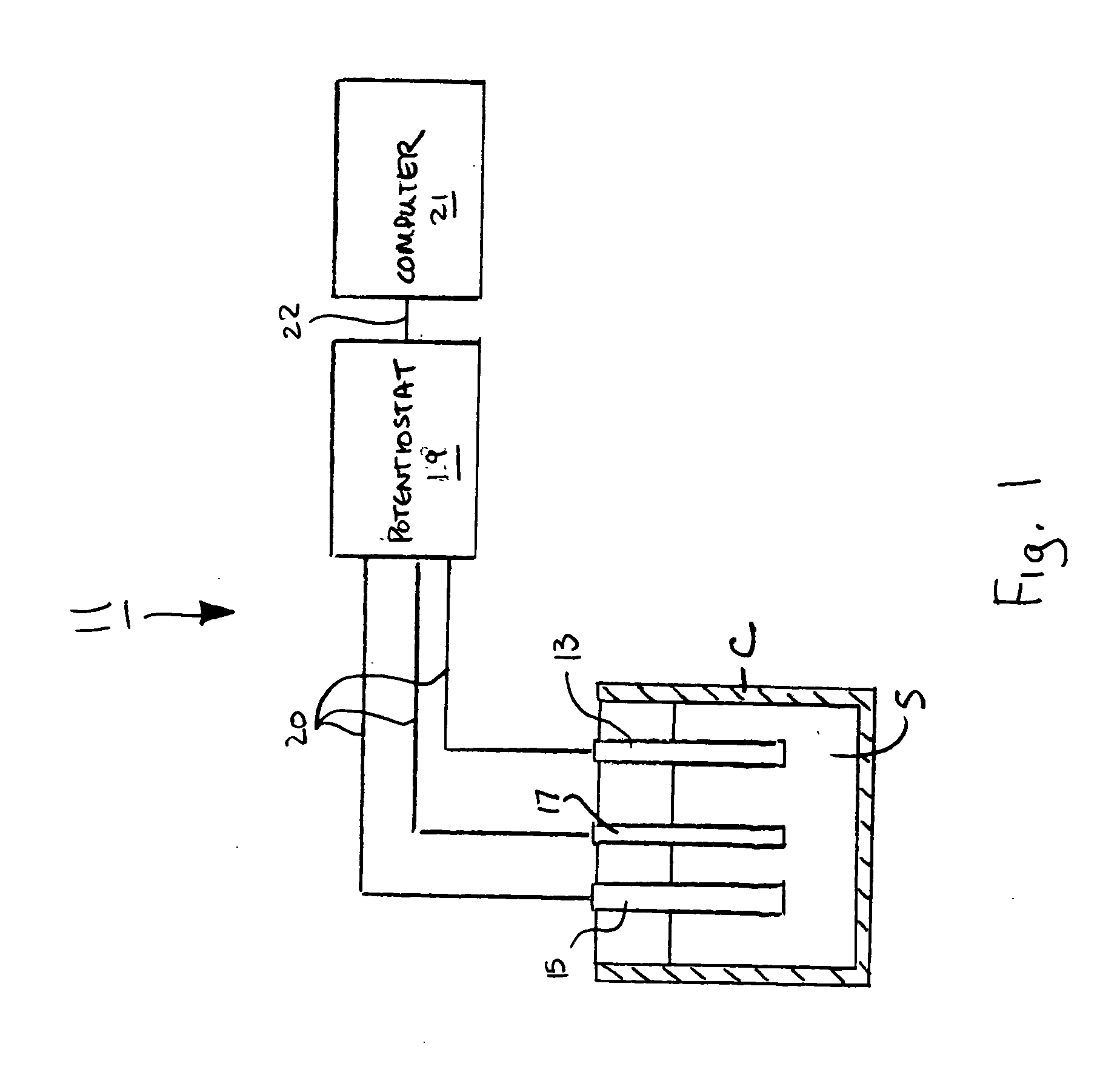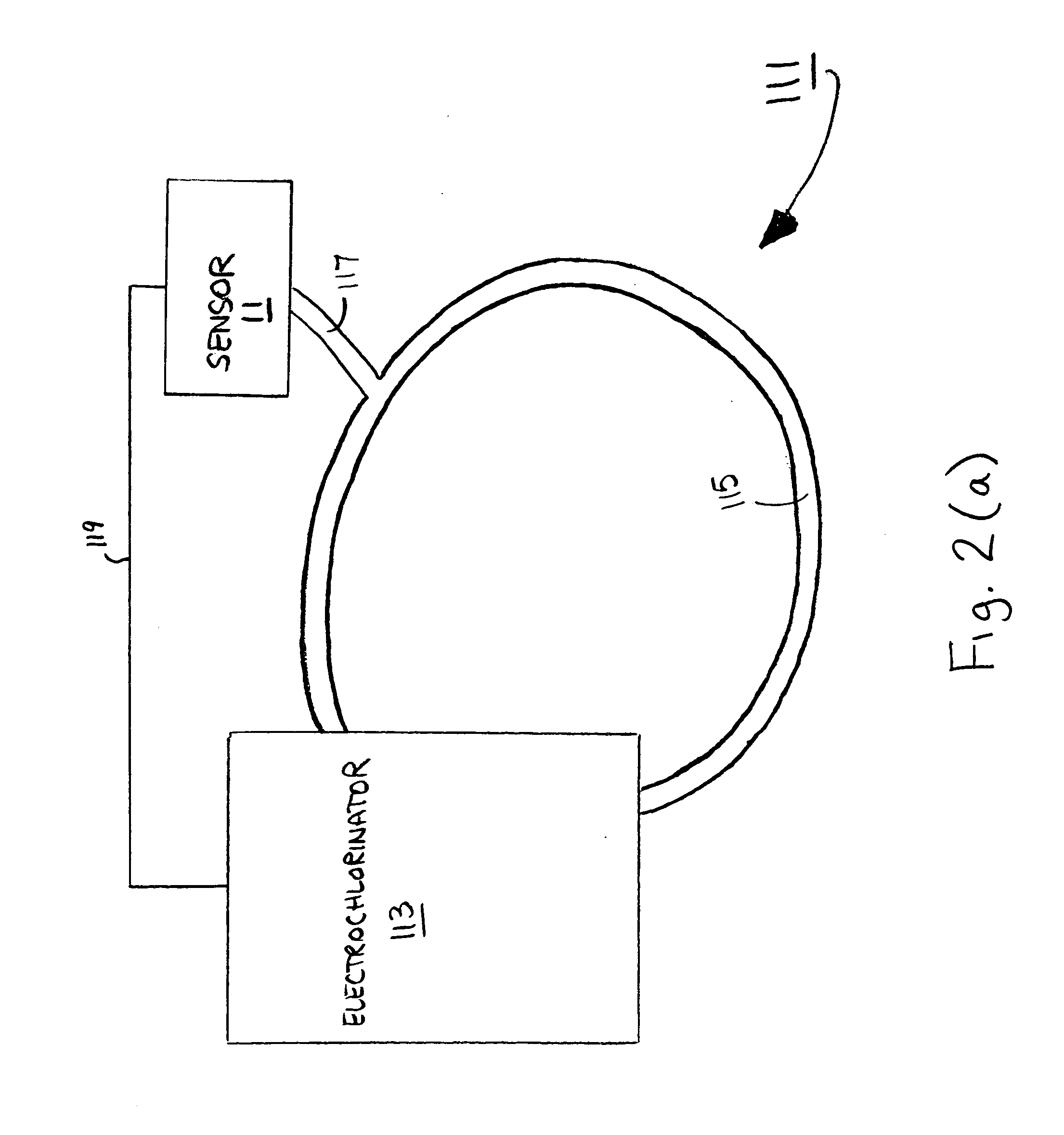Method for detecting individual oxidant species and halide anions in a sample using differential pulse non-stripping voltammetry
a technology of oxidant species and halide anions, applied in the direction of liquid/fluent solid measurement, material electrochemical variables, instruments, etc., can solve the problems of inability to conduct on-line analytical systems, time-consuming methods, and undesirable bromate in disinfecting solutions used to treat desalination membranes
- Summary
- Abstract
- Description
- Claims
- Application Information
AI Technical Summary
Problems solved by technology
Method used
Image
Examples
example 1
NaClO detection in 3.5% NaCl
[0067]Referring now to FIG. 3(a), there are shown various scans obtained using sensor 11 (with a 10 mm2 BDD working electrode 13) and differential pulse non-stripping voltammetry to detect various concentrations of hypochlorite (ClO−) in samples containing a high level of chloride (i.e., 3.5% NaCl aqueous solution). As can be seen, chloride oxidation did not produce an interfering response. Moreover, as can be seen in FIG. 3(b), the response to hypochlorite was linearly concentration dependent.
example 2
pH Effects on Bleach Peak in Seawater Due to Co-Existence of HClO and ClO− Species near pKa
[0068]Referring now to FIG. 4, the response of sensor 11 (with a 10 mm2 BDD working electrode 13) to ClO− and HClO using differential pulse non-stripping voltammetry was tested by adjusting the pH of a 100 ppm ClO− spiked seawater sample from 7 to 9 using HCl or NaOH. As can be seen, the pH change altered the magnitude and shape of the response curves. At low pH, a double peak was observed. However, as pH reached 8.2, the response showed one distinguishable peak. Therefore, the present technique can be used to distinguish the protonated and deprotonated forms from one another, which is a useful feature for the precise determination of oxidizing power of a sample since these two species have different oxidizing strength.
example 3
ClO2− Detection in Ultra-Filtered Seawater
[0069]Referring now to FIG. 5(a), there are shown various scans obtained using sensor 11 (with a 10 mm2 BDD working electrode 13) and differential pulse non-stripping voltammetry to detect chlorite spiked in seawater at various concentrations. As can be seen in FIG. 5(b), the response to chlorite in seawater was linearly concentration dependent. Moreover, as can be seen in FIG. 6, using sensor 11 and differential pulse non-stripping voltammetry, distinct responses were obtained to alternating additions of chlorite and hypochlorite.
PUM
| Property | Measurement | Unit |
|---|---|---|
| concentrations | aaaaa | aaaaa |
| diameter | aaaaa | aaaaa |
| diameter | aaaaa | aaaaa |
Abstract
Description
Claims
Application Information
 Login to View More
Login to View More - R&D
- Intellectual Property
- Life Sciences
- Materials
- Tech Scout
- Unparalleled Data Quality
- Higher Quality Content
- 60% Fewer Hallucinations
Browse by: Latest US Patents, China's latest patents, Technical Efficacy Thesaurus, Application Domain, Technology Topic, Popular Technical Reports.
© 2025 PatSnap. All rights reserved.Legal|Privacy policy|Modern Slavery Act Transparency Statement|Sitemap|About US| Contact US: help@patsnap.com



